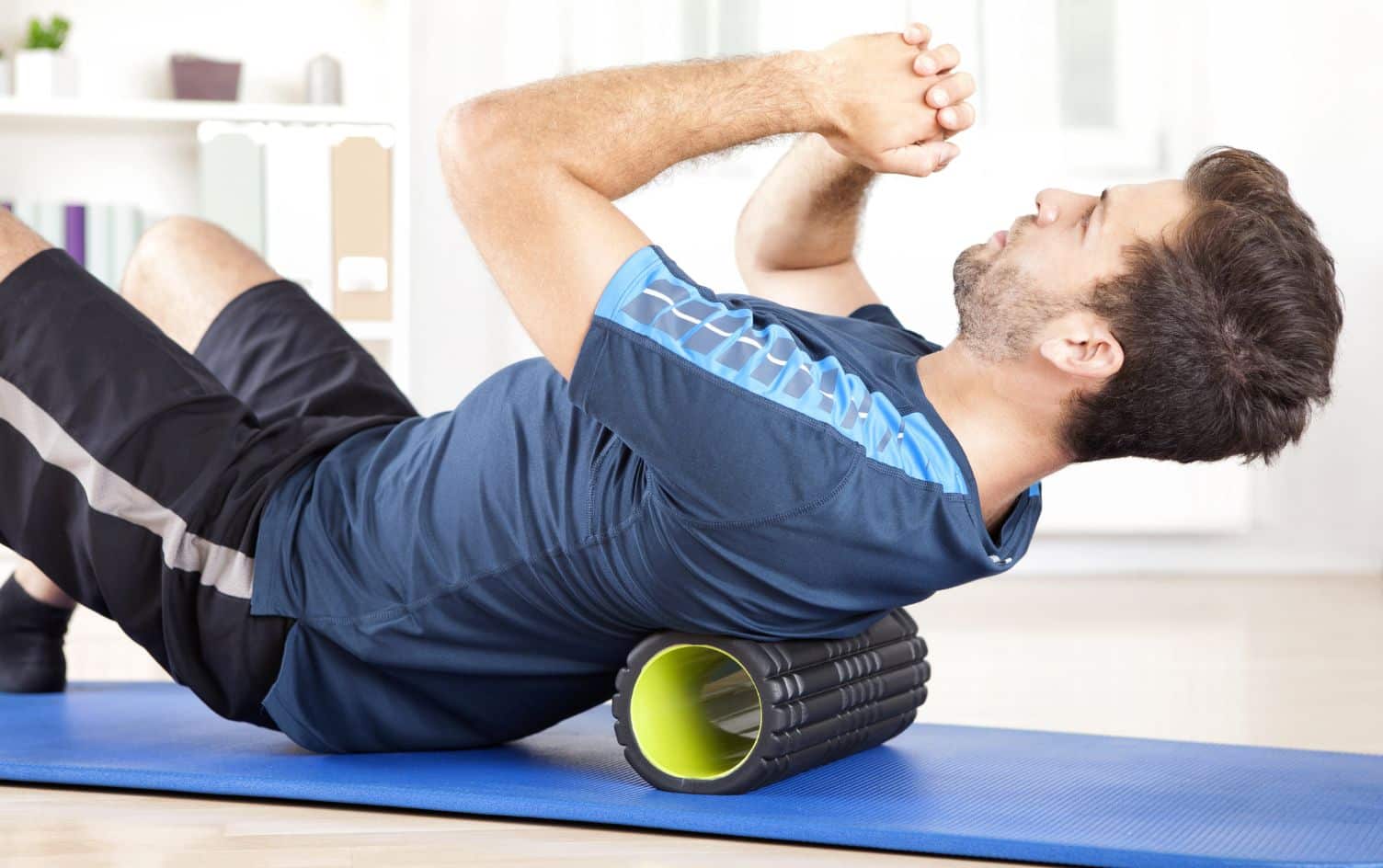Ever stand up after sitting for a long time, only to find your legs, back or shoulders feel tight and hard to move? Well, that’s muscle stiffness.
STIFFNESS VS SORENESS
Muscle stiffness differs from the typical muscle soreness you feel after an intense gym session. Whereas muscle soreness is caused by tiny tears in the muscles themselves and typically subsides within a few days, muscle stiffness is generally the result of muscle disuse, misuse and poor posture. “It’s that feeling you have after you’ve been sitting at the computer for a really long time, and then the next day, all of a sudden, your neck feels really sensitive,” says Briana Kline, a Chicago-based Pilates and movement instructor and founder of Roots of Integrity.
Lauren Haythe, a certified kinesis myofascial integration bodyworker and licensed acupuncturist in New York City, looks at muscle stiffness and soreness as more of an issue of myofascial stiffness and soreness. (Fascia is a web of connective tissue that covers the muscles, along with our internal organs.) “It’s not that the muscles aren’t involved [in stiffness and soreness],” Haythe says, “but I find a lot of it is from both the muscles and the fascia getting pulled or asked to do new things.”
When it comes to muscle and myofascial stiffness, in particular, inactivity can play a big role. “If you don’t use your body in all these different ways, your fascia is going to think, ‘OK, we don’t need to go to that place,’” Haythe says.
As you may have guessed, muscle stiffness is usually not a good thing — especially if you don’t try to resolve it.
“Stiffness, if it’s not worked with, is probably not going to get better,” Kline says, “in fact, it might perpetuate or increase.”
WHY STIFFNESS IS BAD
If you get muscle stiffness as a result of poor posture (Think: Slumped in front of your computer for eight hours a day), and you never try to correct your posture or develop healthier movement patterns, that stiffness will likely continue or worsen. Eventually, that stiffness could lead to injury if you decide to try a new exercise class or otherwise move in ways you’re not accustomed to.
To prevent and resolve muscle stiffness, regular, gentle movement is your best course of action. Even something as simple as lying on your back on top of a foam roller to open up your chest can help relieve muscle tension, Kline says.
HOW TO DEAL
In general, try to avoid sitting or lying in one place for extended periods of time (sleeping is one exception). If you work at a desk for eight hours a day, Haythe recommends getting up at least once every hour to walk around. “Go make yourself a cup of tea or just walk around the office,” she says.
What’s more, activities like yoga and Pilates can help you learn proper alignment and develop better movement patterns, which will have a positive carryover to everyday life. Passive recovery techniques like massage and acupuncture may also help by increasing blood flow and circulation. “A lot of times, that rigidity in the muscles means it’s not getting the blood flow that it needs,” Kline explains.
When it comes to exercise and movement, Haythe encourages her clients to do more than one activity. So, if you’re currently only doing yoga, try strength training as well. At the opposite end of the spectrum, regular weightlifters should consider adding a few yoga classes to their week. “This way, the body isn’t just given the cue of ‘stretch, stretch, stretch,’ or ‘contract, contract, contract,’” Haythe says.
It’s also important to note that dehydration and poor food choices can play a role in muscle stiffness. Make sure you’re hydrating before, during and after your workouts, and avoid inflammatory foods like sugar, gluten and dairy.
Note: If you start noticing stiffness in the joints, this may be a sign of an autoimmune disorder known as rheumatoid arthritis. Get checked by your doctor to be safe.




